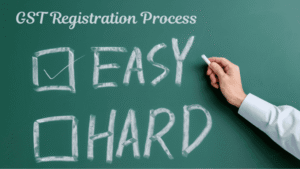Income Tax Refund
Sometimes, a person may find up paying taxes more than they are really needed to. This may be due to excess TDS deducted or an extra income tax estimate. In such instances, you are eligible to claim an income tax refund.
1. What is Income Tax Refund?
An individual may sometimes wind up paying more tax than they should. You may be eligible for an income tax refund, for instance, if advanced tax or tax deducted at source (TDS) exceeds the amount you are required to pay. Under ITR refunds Process one get the refund of the excess amount deposited to the government.
Through online income tax refunds, the government has made this procedure simple. It typically takes 20 to 60 days for your income tax refund to be processed once you have submitted your IT returns and complete verification process . You can follow up with the Centralized Processing Center if it takes longer (CPC) for the status of your refund. {Pro Tip: Benefits on Purchasing New House}
2. Calculation of Income Tax Refund
You may calculate your income tax refund when you file your IT returns by adjusting all deductions and exemptions into your total income.
Refund of Taxes Paid = Total tax deposited – Taxes Owed for the Year
Any advance taxes, TDS, TCS (tax collected at source), and self-assessment tax will all be included in the total tax paid for the year. If this is more than your actual tax obligation, you may be eligible for an ITR refund. You may calculate your income tax refund by using the same income tax calculator.
In order to calculate your income tax refund, consider the following factors:
Income Tax Refund Calculator | Amount |
Income that is taxable (A) | Rs. 5,00,000 |
Gross tax liability on above (B) | Rs. 12,875 |
Less: Foreign tax credit (if applicable) | Rs. 1,000 |
Net tax liability | Rs. 11,875 |
Add: Interest on tax liability (Sections 234A, 234B and 234C) | NIL |
Total tax liability | Rs. 11,875 |
Less: Taxes paid (C) | Rs. 25,000 |
Tax refund | Rs. 13,125 |
As you see, when B<C, you shall be eligible for an income tax refund. In case C<B, then you shall be eligible to pay income tax in lieu of your tax liability. { A Guide for Income tax return filing in Mumbai}
3. How is Income Tax Refund Processed?
Refunding income taxes is a very simple procedure. Refund processing will begin when you submit your taxes and complete the verification process either online or by posting a paper copy of the ITR-V acknowledgement. The CPC will confirm your taxes, determine if the amount of tax paid exceeds your tax obligation, and start processing your refund. An income tax refund will be created when the refund procedure is finished, and it will be immediately paid to your bank account.
4. Eligibility for ITR Refund
If the taxes you paid during a financial year were more than your actual tax due, you are qualified to obtain an income tax refund from the tax authorities. Some explanations as to why a person may have overpaid taxes include:
- Self-assessment-based advance tax payment exceeds actual tax obligation.
- Tax Deducted at Source (TDS) deduction exceeds the actual tax liability.
- Tax computation error leading to larger tax paid than the actual tax due
- the double taxation of money generated overseas
However, you must accurately submit your ITR and have it confirmed in order to get a refund for the extra tax you paid.
5. Claiming of Income Tax Refund
To request an ITR refund, there is no additional procedure. To request an income tax refund, all you have to do is submit your ITR. If you are entitled to a tax refund, whether it be due to a TDS refund, a double taxation refund, or for any other reason, all you need to do is submit your taxes accurately and have them verified.
- Make sure to submit your taxes by the deadline to get speedy Refund. The deadline to submit an Individual Tax Return for individuals is typically July 31.
- You must legally submit your ITR in order to be qualified for a refund. Verify that all of the information on the ITR form is accurate. Make sure you provide the right information by consulting Form 16, Form 24AS, TDS certificates, AIS, TIS, self-assessment taxes paid, etc.
- Verifying your eligibility for a refund is the next step when you are certain that you have all the necessary information.
- Be aware of the reimbursement you are entitled to. This makes it simple to keep track of the credit you should be getting.
- Don’t forget to Verify your ITR returns once you’ve filed them. This is equally crucial to filing taxes. Verification of ITR filings may be done physically or electronically. Either an OTP generated using your Aadhar or an electronic verification code (EVC) delivered to your registered cellphone number are used for electronic verification. You may also submit a signed copy of the ITR Form V acknowledgement to the CPC within 120 days after submitting your returns in order to physically confirm your ITR filing.
- Usually within 45 days of ITR processing, the income tax refund get credited to your bank account. If it takes longer, ask the CPC what’s going on and why it’s taking so long. { Related Read: Income Tax Return Filing in Mumbai}
6. How to Check the Status of Your Tax Refund
The income tax e-filing portal or the NSDL website both provide online tools for tracking ITR refund status, as was previously indicated.
Income Tax E-Filing Website
- Visit incometaxindiaefiling.gov.in/home
- Use your PAN number as your USER ID, your password, and the captcha code to get into your account.
- Click to the “View Returns / Forms” tab.
- Find the “Select An Option” box on this page, then select the “Income tax Returns” link in the drop-down menu.
- After entering the assessment year, submit the form.
- You can check the progress of your ITR refund by clicking on the relevant ITR acknowledgement number.
NSDL Website
- Fill up your PAN information, assessment year, and captcha code.
- To see the status of your ITR refund, click submit.
7. All Income Tax Refund Status Definition
You’ve signed in to your account and wish to check the status of your ITR refund. The many options and their significance are shown below:
Status | Meaning |
E-filing not done | This indicates that you either failed to submit your return, incorrectly validated it, or manually processed it. Your return was either not submitted at all or was manually filed. To fix it, review your submission. |
Your bank has already received the refund. Contact your bank immediately. | This indicates that while the CPC has processed your refund, your bank account has not yet received a credit for it. To find out how to proceed, check with your bank or the CPC. |
Refund has been encashed | This needs no explanation. Your bank account has been credited with your ITR refund, which has also been processed and cashed. You should verify with your bank if there is a mismatch. |
Refund Not Determined | Your ineligibility for an ITR refund has been established by the Income Tax department. or you did not properly submit your taxes. Please double-check your paperwork. |
Refunds cannot be credited because the account number you supplied is incomplete. | This is the status that you can get if you provide the wrong bank account number. Don’t panic; you may request that the refund be completed and amend your bank account information. |
Defective return u/s 139(9) | You will be informed of this status if your ITR submission contains a mistake. Check your tax file or the comments for the precise flaw. |
ITR processed but need a rectification request | You will be given this status if the Income Tax Department discovers a discrepancy between the taxes you submit and their records. |
Return filed; jurisdictional assessing officer now has processing authority. | Your request will be handled by the Jurisdictional Assessing Officer. |
Return submitted but unconfirmed | It’s possible that you submitted your taxes but failed to double-check them. Within 120 days of submitting your taxes, you must either e-verify them or send ITR-V to CPC. |
Return Processed with No Demand and No Refund | This indicates that even if your ITR has been filed, you are not entitled to a refund. |
Processing of Return and Determination of Tax Demand | This indicates that the IT division has evaluated your ITR and has established the amount of tax that is due. |
Return Processed and Refund returned Unpaid | This result indicates that your bank account information or the address where the refund will be sent are both wrong. For a reimbursement, make the necessary corrections. |
returned and is being processed | This suggests that processing of your income tax return is still ongoing. |
Return Processed and Refund Paid | Again, this is self-explanatory. It indicates that your bank account has been credited with the proceeds of your return. |
Return Submitted and Verified | A waiting game is in order given the current state of affairs. It means the refund will be processed soon. |
Invalid Return | If the IRS concludes that your tax returns are invalid, you’ll get this message. You will be required to re-file your tax returns. |
Return Processed. Refund Adjusted Against Demand | IT staff may alter your refund claim if they uncover an outstanding balance from a previous refund claim. |
8. What to Do If Refund is Not Processed?
Between 20 and 60 days after the CDC processes your ITR, you may expect to receive your income tax refund. If you haven’t gotten your refund, the first step is to check the status of your refund on the e-filing site or NSDL. In order to find out why your returns have been delayed, you may have to resubmit them, wait a little longer, or contact the jurisdictional assessing officer.
If you have any questions, you may call the Notification and Processing Center Monday through Friday from 8 AM to 8 PM at 18001034455 or +91-80-46605200. Email us at refunds@incometaxindia.gov.in if you’d prefer that method of contact.
9. Interest on Delayed Income Tax Refund
You may be entitled to interest on your tax refund if it is delayed by the Internal Revenue Service owing to a problem on their end, as stated in Section 244A of the Income Tax Act.
- Taxpayers who get a refund that is equal to or greater than 10% of the tax they paid will be subject to interest charges by the government.
- A 0.5 percent interest rate will be paid to those who file their taxes before the April 1st deadline, so long as they have done so before the due date.
However, keep in mind that if your refund is less than 10% of your tax, no interest will be paid.
10. Setting-Off Outstanding Taxes Against Refunds
It’s possible that you’ll receive a return that’s less than what you expected. If you owe back taxes from a previous year, the Department may deduct that amount from your refund request.
Section 245 of the Income Tax Act mandates that the IT Department notify you of this, so keep that in mind. This claim must be accepted or rejected within 30 days. It’s up to the IT department whether or not they reply.
Read More: Accounting Services








